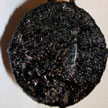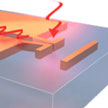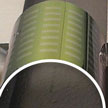Showing Spotlights 1273 - 1280 of 2780 in category All (newest first):
 An increasing number of companies is involved in commercializing graphene on an industrial scale although the high cost of graphene is one of the major obstacles to its widespread adoption for commercial applications. The Nanomaterial Database we also list commercial graphene products and we keep a list of graphene manufacturers and suppliers that is constantly updated. Currently, this list contains 40 companies which are listed in this article.
An increasing number of companies is involved in commercializing graphene on an industrial scale although the high cost of graphene is one of the major obstacles to its widespread adoption for commercial applications. The Nanomaterial Database we also list commercial graphene products and we keep a list of graphene manufacturers and suppliers that is constantly updated. Currently, this list contains 40 companies which are listed in this article.
Sep 19th, 2013
 Optical imaging of nanoscale objects, whether it is based on scattering or fluorescence, is a challenging task due to reduced detection signal-to-noise-ratio and contrast at sub-wavelength dimensions. While advances in light microscopy have led to techniques that can image individual nanoparticles, these methods rely on relatively sophisticated and expensive microscopy systems. Researchers have now created a field-portable fluorescence microscopy platform installed on a smartphone for imaging of individual nanoparticles as well as viruses using a light-weight and compact opto-mechanical attachment to the existing camera module of the cellphone.
Optical imaging of nanoscale objects, whether it is based on scattering or fluorescence, is a challenging task due to reduced detection signal-to-noise-ratio and contrast at sub-wavelength dimensions. While advances in light microscopy have led to techniques that can image individual nanoparticles, these methods rely on relatively sophisticated and expensive microscopy systems. Researchers have now created a field-portable fluorescence microscopy platform installed on a smartphone for imaging of individual nanoparticles as well as viruses using a light-weight and compact opto-mechanical attachment to the existing camera module of the cellphone.
Sep 17th, 2013
 Oxygen is an advantageous battery storage material as it is freely available from the air and does not need to be carried with the other battery components. Unlike the lithium-ion batteries used today, lithium-oxygen batteries do not require metal oxide cathodes to produce electrochemical power, instead generating power from reactions with oxygen in the atmosphere. A new class of rechargeable batteries - 'molten air' batteries - suses highly conductive molten electrolytes and very high capacity multiple electron compounds such as carbon and vanadium diboride. Unlike prior rechargeable molten batteries, the molten air battery is not burdened by the weight of the active chargeable cathode material.
Oxygen is an advantageous battery storage material as it is freely available from the air and does not need to be carried with the other battery components. Unlike the lithium-ion batteries used today, lithium-oxygen batteries do not require metal oxide cathodes to produce electrochemical power, instead generating power from reactions with oxygen in the atmosphere. A new class of rechargeable batteries - 'molten air' batteries - suses highly conductive molten electrolytes and very high capacity multiple electron compounds such as carbon and vanadium diboride. Unlike prior rechargeable molten batteries, the molten air battery is not burdened by the weight of the active chargeable cathode material.
Sep 16th, 2013
 A team of researchers in Germany and the U.S. demonstrates that it is possible to operate extremely compact optical circuits on the nanoscale, a size scale that makes it compatible and potentially competitive with state-of-the-art electronic microchips, while substantially reducing the limiting factor of heating loss and while strongly increasing the efficiency to funnel infrared laser light into these circuits with a novel design of optical nanoantennas.
A team of researchers in Germany and the U.S. demonstrates that it is possible to operate extremely compact optical circuits on the nanoscale, a size scale that makes it compatible and potentially competitive with state-of-the-art electronic microchips, while substantially reducing the limiting factor of heating loss and while strongly increasing the efficiency to funnel infrared laser light into these circuits with a novel design of optical nanoantennas.
Sep 13th, 2013
 Notwithstanding the red-hot research area of flexible electronics, today's state-of-the-art electronic devices rely on rigid and brittle mono-crystalline silicon based transistors which are unmatched with regard to low-cost production, high-performance computing, and ultra-low power consumption. Researchers have now developed a low-cost generic batch process using a state-of-the-art CMOS process to transform conventional silicon electronics into flexible and transparent electronics while retaining its high-performance, ultra-large-scale-integration density and cost.
Notwithstanding the red-hot research area of flexible electronics, today's state-of-the-art electronic devices rely on rigid and brittle mono-crystalline silicon based transistors which are unmatched with regard to low-cost production, high-performance computing, and ultra-low power consumption. Researchers have now developed a low-cost generic batch process using a state-of-the-art CMOS process to transform conventional silicon electronics into flexible and transparent electronics while retaining its high-performance, ultra-large-scale-integration density and cost.
Sep 11th, 2013
 As the use of antibiotics increases for medical, veterinary and agricultural purposes, the increasing emergence of antibiotic-resistant strains of pathogenic bacteria is an unwelcome consequence. The incidence of the multidrug resistance (MDR) of bacteria which cause infections in hospitals/intensive care units is increasing, and finding microorganisms insensitive to more than 10 different antibiotics is not unusual. The emergence of superbugs has made it imperative to search for novel methods, which can combat the microbial resistance. Thus, application of nanotechnology in pharmaceuticals and microbiology is gaining importance to prevent the catastrophic consequences of antibiotic resistance.
As the use of antibiotics increases for medical, veterinary and agricultural purposes, the increasing emergence of antibiotic-resistant strains of pathogenic bacteria is an unwelcome consequence. The incidence of the multidrug resistance (MDR) of bacteria which cause infections in hospitals/intensive care units is increasing, and finding microorganisms insensitive to more than 10 different antibiotics is not unusual. The emergence of superbugs has made it imperative to search for novel methods, which can combat the microbial resistance. Thus, application of nanotechnology in pharmaceuticals and microbiology is gaining importance to prevent the catastrophic consequences of antibiotic resistance.
Sep 10th, 2013
 Thanks to nanotechnology, medical research is moving quickly towards a future where intelligent medical implants can continuously monitor their condition inside the body and autonomously respond to changes such as infection by releasing anti-inflammatory agents. A recent review discusses present and prospective implantable sensors incorporating nanostructured carbon allotropes. The authors describe various applications with an in-depth look at the implantable sensors from the viewpoints of nanomedicine, materials science, nanobiotechnology, and sensor design, both present and future.
Thanks to nanotechnology, medical research is moving quickly towards a future where intelligent medical implants can continuously monitor their condition inside the body and autonomously respond to changes such as infection by releasing anti-inflammatory agents. A recent review discusses present and prospective implantable sensors incorporating nanostructured carbon allotropes. The authors describe various applications with an in-depth look at the implantable sensors from the viewpoints of nanomedicine, materials science, nanobiotechnology, and sensor design, both present and future.
Sep 5th, 2013
 Conventional carbon-fiber electrodes have been the material of choice for identifying the chemical nature of neurotransmitters in the brain. Unfortunately, they have some limitations that leave some of the molecules that researchers are interested in just out of our reach. Further miniaturization of biologically compatible, carbon based electrode materials to the nanoscale promises to enhance the very characteristics that made microelectrodes so transformative in the first place, enabling high speed measurements in discrete spatial locations.
Conventional carbon-fiber electrodes have been the material of choice for identifying the chemical nature of neurotransmitters in the brain. Unfortunately, they have some limitations that leave some of the molecules that researchers are interested in just out of our reach. Further miniaturization of biologically compatible, carbon based electrode materials to the nanoscale promises to enhance the very characteristics that made microelectrodes so transformative in the first place, enabling high speed measurements in discrete spatial locations.
Sep 3rd, 2013
 An increasing number of companies is involved in commercializing graphene on an industrial scale although the high cost of graphene is one of the major obstacles to its widespread adoption for commercial applications. The Nanomaterial Database we also list commercial graphene products and we keep a list of graphene manufacturers and suppliers that is constantly updated. Currently, this list contains 40 companies which are listed in this article.
An increasing number of companies is involved in commercializing graphene on an industrial scale although the high cost of graphene is one of the major obstacles to its widespread adoption for commercial applications. The Nanomaterial Database we also list commercial graphene products and we keep a list of graphene manufacturers and suppliers that is constantly updated. Currently, this list contains 40 companies which are listed in this article.
 Subscribe to our Nanotechnology Spotlight feed
Subscribe to our Nanotechnology Spotlight feed





